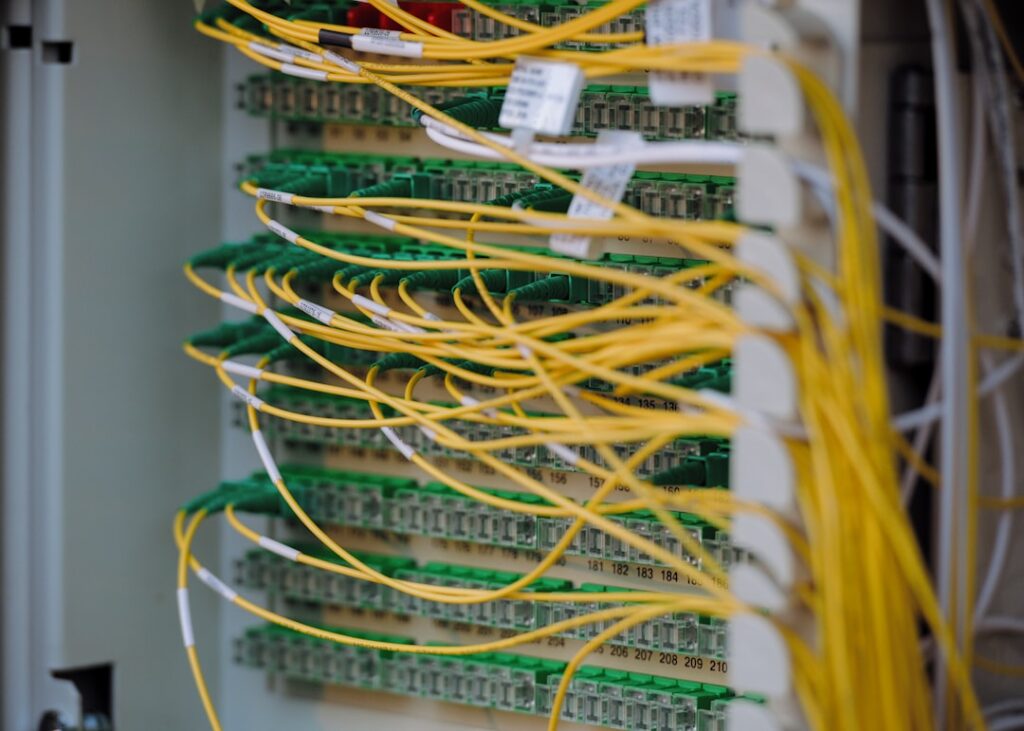As I delve into the world of web hosting and server management, I find that one of the most crucial aspects is understanding how to configure the web server settings effectively. Among these settings, changing the web server port in CyberPanel stands out as a significant task that can enhance both security and functionality. CyberPanel, a popular web hosting control panel, offers a user-friendly interface for managing various server configurations, including the web server port.
This article aims to guide you through the process of changing the web server port in CyberPanel, ensuring that you have a comprehensive understanding of why and how to do it. Changing the web server port is not merely a technical adjustment; it can have profound implications for the security and accessibility of your web applications. By default, web servers typically operate on port 80 for HTTP and port 443 for HTTPS.
However, there are scenarios where altering these ports can be beneficial. For instance, changing the default port can help mitigate certain types of cyberattacks, such as automated scans and brute force attacks, which often target well-known ports. In this article, I will explore the default web server port in CyberPanel, provide step-by-step instructions for changing it, and discuss the implications of such changes.
Key Takeaways
- Changing the web server port in CyberPanel can help improve security and prevent unauthorized access.
- The default web server port in CyberPanel is 8090, but it can be changed to any available port number.
- To change the web server port in CyberPanel, users can modify the configuration file and restart the web server.
- After changing the web server port, it’s important to test the new port to ensure that the web server is functioning properly.
- When changing the web server port in CyberPanel, users should be aware of common issues and consider security implications to avoid potential vulnerabilities.
Understanding the Default Web Server Port in CyberPanel
Before I embark on the journey of changing the web server port, it is essential to understand what the default web server port is in CyberPanel. By default, CyberPanel uses port 80 for HTTP traffic and port 443 for HTTPS traffic. These ports are standard across most web servers and are recognized universally by browsers and other internet applications.
This standardization allows users to access websites without needing to specify a port number explicitly in their URLs. However, while these default ports are convenient, they also make servers more susceptible to attacks. Since they are widely known, malicious actors often target them in their attempts to exploit vulnerabilities.
Understanding this context is crucial as I consider changing the web server port. By moving away from these defaults, I can potentially reduce the risk of unauthorized access and improve my server’s overall security posture. Additionally, I can create a more customized environment tailored to my specific needs and preferences.
Steps to Change the Web Server Port in CyberPanel

Changing the web server port in CyberPanel is a straightforward process that I can accomplish through its intuitive interface. First, I need to log into my CyberPanel dashboard using my administrator credentials. Once logged in, I navigate to the “Websites” section, where I can manage all my hosted domains.
Selecting the website for which I want to change the port is my next step. After selecting the website, I look for an option labeled “Manage.” Within this management interface, I can find various settings related to my website’s configuration. Here, I will locate the “Change Port” option.
It is important to note that I should choose a new port number that is not already in use by another service on my server. Common alternative ports include 8080 or 8443, but I must ensure that my chosen port does not conflict with any existing services. Once I have selected a new port number, I will save my changes and restart the web server for the modifications to take effect.
This step is crucial because it ensures that the new settings are applied correctly. After restarting the server, I will need to update any firewall rules or security groups associated with my server to allow traffic through the new port. This process may vary depending on my hosting environment, but it is essential to ensure that my website remains accessible after making these changes.
Testing the New Web Server Port in CyberPanel
After successfully changing the web server port in CyberPanel, it is time for me to test whether everything is functioning as expected. The first step in this testing phase involves accessing my website using the new port number. To do this, I will enter my website’s URL followed by a colon and the new port number in my browser’s address bar.
For example, if I changed my web server port to 8080, I would enter “http://mywebsite.com:8080” to see if my site loads correctly. If my website loads without any issues, it indicates that the new port configuration is working as intended. However, if I encounter any errors or if the site fails to load, it may signal that something went wrong during the configuration process.
In such cases, I will need to double-check my settings in CyberPanel and ensure that all necessary firewall rules are correctly configured to allow traffic through the new port. Additionally, I can use online tools or command-line utilities like `curl` or `telnet` to further verify that my server is listening on the new port. By executing commands such as `curl http://mywebsite.com:8080`, I can confirm whether my server responds appropriately on the specified port.
This thorough testing process ensures that my website remains accessible and functional after making changes to its configuration.
Troubleshooting Common Issues When Changing the Web Server Port in CyberPanel
Despite following all necessary steps to change the web server port in CyberPanel, I may still encounter some common issues that could hinder access to my website. One of the most frequent problems arises from firewall settings. If my firewall is not configured to allow traffic on the new port, users attempting to access my site will be met with connection errors.
To resolve this issue, I must review my firewall rules and ensure that inbound traffic is permitted on the newly designated port. Another potential issue could stem from caching mechanisms or DNS propagation delays. If I have recently changed my domain’s DNS settings or if there are caching layers involved (such as CDN services), it may take some time for these changes to propagate fully across the internet.
During this period, users may experience difficulties accessing my site even if everything is configured correctly on my end. In such cases, patience is key while waiting for DNS changes to take effect. If problems persist despite addressing these common issues, I may need to consult CyberPanel’s documentation or community forums for additional troubleshooting tips.
Engaging with other users who have faced similar challenges can provide valuable insights and solutions that may not be immediately apparent.
Security Considerations When Changing the Web Server Port in CyberPanel

As I consider changing the web server port in CyberPanel, security remains at the forefront of my mind. While altering the default ports can enhance security by obscurity—making it less likely for attackers to find and target my server—there are additional considerations I must keep in mind. One critical aspect is ensuring that any new ports I choose are not commonly associated with other services or protocols that could inadvertently expose my server to vulnerabilities.
Moreover, after changing the web server port, it is essential for me to implement robust security measures such as firewalls and intrusion detection systems (IDS). These tools can help monitor traffic on my new port and alert me to any suspicious activity. Additionally, regularly updating my software and applying security patches will further fortify my server against potential threats.
Another important consideration is SSL/TLS configuration if I am using HTTPS on a non-standard port. Ensuring that SSL certificates are correctly set up for the new port is vital for maintaining secure connections with users visiting my site. Failure to do so could result in security warnings or errors when users attempt to access my website over HTTPS.
Additional Tips and Best Practices for Changing the Web Server Port in CyberPanel
In addition to following the steps outlined earlier for changing the web server port in CyberPanel, there are several best practices that I can adopt to ensure a smooth transition and optimal performance. First and foremost, documenting all changes made during this process is crucial. Keeping a record of old and new configurations allows me to revert back if necessary and provides a reference point for future adjustments.
I should also consider informing users or stakeholders about the change in advance if my website has regular visitors or clients who rely on its availability. Clear communication can help mitigate confusion or frustration when users encounter a different access method due to the new port number. Furthermore, testing thoroughly after making changes cannot be overstated.
Beyond just checking if the site loads correctly on the new port, I should also monitor performance metrics and user feedback closely during this transition period. This proactive approach allows me to identify any unforeseen issues early on and address them promptly. Lastly, staying informed about best practices in web security and server management will serve me well in maintaining a secure and efficient hosting environment long after changing the web server port.
Conclusion and Final Thoughts on Changing the Web Server Port in CyberPanel
In conclusion, changing the web server port in CyberPanel is a valuable skill that can enhance both security and functionality for anyone managing a web hosting environment. By understanding the default ports used by CyberPanel and following a systematic approach to change them, I can create a more secure setup tailored to my specific needs. Throughout this process, I’ve learned about potential challenges and best practices that accompany such changes.
From troubleshooting common issues related to firewall settings and DNS propagation delays to implementing robust security measures post-change, each step plays a vital role in ensuring a successful transition. Ultimately, as technology continues to evolve and cyber threats become increasingly sophisticated, adapting our server configurations—such as changing web server ports—remains an essential practice for maintaining a secure online presence. By staying informed and proactive about these adjustments, I can contribute significantly to safeguarding my digital assets while providing reliable access for users visiting my websites.
If you’re looking to optimize your web server’s performance after changing the port in CyberPanel, you might find it beneficial to explore how to enhance your website’s speed and efficiency. A related article that could be of interest is about using Google PageSpeed Insights to improve your site’s performance metrics. This tool provides valuable insights into how your website can be optimized for faster loading times, which is crucial after making server adjustments. For more detailed guidance, you can read the article on Google PageSpeed Insights.
FAQs
What is CyberPanel?
CyberPanel is a web hosting control panel that allows users to manage their web server and associated services.
Why would I need to change the web server port in CyberPanel?
You may need to change the web server port in CyberPanel if you want to run multiple web servers on the same machine, or if you want to improve security by changing the default port.
How can I change the web server port in CyberPanel?
To change the web server port in CyberPanel, you can edit the configuration file for the web server (e.g., Apache or LiteSpeed) and modify the port number.
Are there any potential issues or risks associated with changing the web server port in CyberPanel?
Changing the web server port in CyberPanel may cause issues with existing configurations or applications that rely on the default port. Additionally, it may require updating firewall rules and DNS records to reflect the new port.
Can I revert back to the default web server port in CyberPanel if needed?
Yes, you can revert back to the default web server port in CyberPanel by simply editing the configuration file for the web server and restoring the original port number.
Are there any best practices to follow when changing the web server port in CyberPanel?
It is recommended to carefully plan and communicate any changes to the web server port, and to thoroughly test the impact of the change on existing applications and services. Additionally, it is important to update any relevant documentation and configurations to reflect the new port number.
